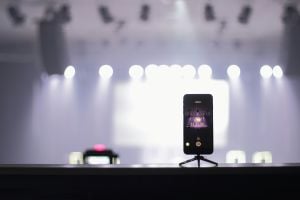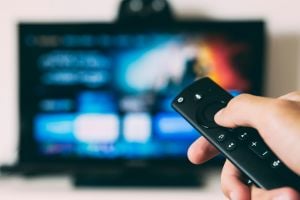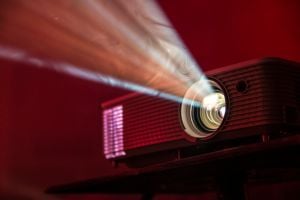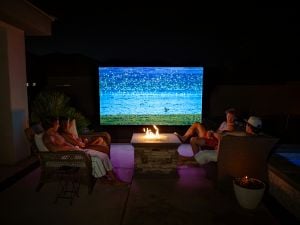The package from the big 5 5 sale just landed. Inside: a laser projector you have been eyeing for months. It looks gorgeous on the coffee table, but right now it is nothing more than an expensive paperweight. Netflix, the PlayStation, even the phone in your pocket, all need a highway into that HDMI port, and you are pretty sure one wrong cable could fry something. Breathe. I have untangled more cords than I can count, so tonight we will turn that glowing box into the life of the party. Grab a cold drink, pull a chair near the outlet, and let us connect everything - one cable, dongle, or Wi-Fi beam at a time.

Editor
Lloyd Kelly Miralles chevron_right
Table of Contents
1. The Connection Cheat Sheet (Know Your Ports Before You Start)

|
Port or Tech |
When to use it |
Fast benefit |
Hidden catch |
|
HDMI 2.1 |
Consoles, laptops, set-top boxes |
4 K 120 Hz video and lossless audio in one plug |
Needs a “48 Gbps” cable or the projector will downshift |
|
USB-C DisplayPort Alt-Mode |
New laptops and many 2024-25 phones |
One slim wire for video and charging |
Not every USB-C jack handles video |
|
eARC (on HDMI) |
Soundbars, AV receivers |
Dolby Atmos with no extra cable |
Both devices must list eARC, not just ARC |
|
Bluetooth audio |
Portable speakers, earbuds |
Zero cables |
Noticeable lip-sync gap in action scenes |
|
Wi-Fi 6/6E casting |
Wireless mirroring and streaming sticks |
Less buffering thanks to 6 GHz band unlocked by the NTC in 2024 |
Your router matters as much as the projector |
Take thirty seconds to look at the labels on the back of your projector. The table above now reads like a friendly map instead of alien symbols.
2. Laptop Love Story: From Spreadsheet to Cinema

The Sure Thing: Wired
An HDMI cable from the laptop to the projector is the rice of video connections: cheap, everywhere, rarely wrong. If your ultrabook dropped HDMI for thinness, pick a USB-C-to-HDMI dongle that clearly states “4 K 60 Hz.” Anything less turns documentary pans into slide shows.
The Cable-Free Flex: Wireless
Most Windows 11 machines support Miracast. Hit Windows + K, select the projector, and you are streaming in 1080p at 60 frames per second. The only catch is congestion. Upgrading to a Wi-Fi 6E mesh takes advantage of that new 6 GHz airspace so your movie is not competing with the neighbors’ smart cameras.
3. Phone to Projector: Pocket Cinema

Android Crowd
- USB-C to HDMI. Samsung DeX, Pixel’s DisplayPort mode, and many mid-range phones push 4 K video through a ₱1,200 active cable.
- Google Cast Successor. Google retired the Chromecast line in 2024 and rolled out the Google TV Streamer, a faster stick that doubles as a smart-home hub. Plug it into HDMI and cast YouTube while your phone live-posts on social media.
Apple Faithful
- USB-C iPhones and iPads. With Lightning gone, a single USB-C-to-HDMI cable does the trick.
AirPlay 2. Still great for wireless mirroring, just update to iOS 18.4 or later to patch the spring 2025 security hole that allowed random pop-ups during streams .
4. Game Console Showdown

The PlayStation 5 and Xbox Series X auto-detect 4 K 120 Hz on most 2024-25 laser projectors. Epson’s EH-TW6250, for instance, drops input lag to roughly 20 milliseconds in gaming mode. The Nintendo Switch tops out at 1080p60, yet on a 100-inch wall, it still feels huge - just sit a step farther back so the pixels do not shout at you.
Lag tip: If your projector offers Game or Fast mode, enable it. That setting bypasses heavy image processing and keeps your hitscan shots on target.
5. Streaming Sticks and Boxes: The Set-and-Forget Route

- Google TV Streamer (2024) – boots in four seconds, packs Thread and Matter radios, and replaces the beloved Chromecast line
- Apple TV 4 K – still the smoothest interface and pairs with AirPods for late-night sessions.
- Amazon Fire TV Stick 4 K Max (2025) – finally in Philippine online shops with Wi-Fi 6E and a faster Alexa chip.
- Roku Express 4 K+ – inexpensive but lacks a few regional apps.
Plug any stick into HDMI 1, feed it USB power from the projector’s five-volt port if it delivers at least one amp, and you are done.
6. Sound: Big Picture, Bigger Audio

Even feature-packed projectors struggle to move serious air. The Yaber K300s hides dual 15 W JBL drivers that beat tinny laptop speakers but still fall short of true cinema punch.
- eARC route. One ultra-high-speed HDMI cable from the projector’s eARC port to a Dolby Atmos soundbar yields overhead thunder in disaster movies.
- Optical fallback. Fine for 5.1, though optical cannot carry the height channels of Atmos.
- Bluetooth plan B. Quick and clean but adds about half a second of delay, so explosions look like silent fireworks. If your unit allows, tweak lip sync settings to compensate.
7. Real-World Story: Rooftop Cinema Rescue

Last month, my neighbor tried to stream a championship match on a Nebula Capsule 3 Laser during a roof-deck get-together. The Wi-Fi band was jammed because half the block was also watching the game on their phones. The image froze, and the crowd sighed. I pulled a USB-C-to-HDMI cable from my backpack, tethered his Galaxy S25 Ultra to 5 G data, and we were back in business before the next serve landed. Lesson: always carry one wired fallback.
8. Power and Pesos: Keep the Bill Friendly

Good news: Meralco’s overall rate dropped by almost seventy-five centavos this May, lowering a typical household bill to ₱12.26 per kWh. Still, a laser projector can draw 200–350 watts.
- Eco mode saves up to thirty percent power at the cost of some brightness.
- Smart plugs schedule a full shutdown at 2 a.m. because many of us fall asleep during the fifth episode.
- Short HDMI runs under three meters reduce the need for active, powered cables.
9. Quick Troubleshooting

- No signal - press the Source button twice; some projectors default to VGA on first boot.
- Green tint - replace the ₱50 roadside HDMI cable with one that is certified Ultra High Speed.
- Fuzzy text - lower the Sharpness setting; over-sharpening creates white halos.
- Audio ahead of video - switch from Bluetooth to wired or disable Motion Smoothing in the projector menu.
- Wi-Fi stutters - move the projector in line of sight of the router or switch to 6 GHz if supported.
Conclusion
Look at you. Thirty minutes ago that projector felt like a techno puzzle, now it is the centerpiece of movie night, game day, and spontaneous sing-along sessions. You know which cable to grab, when to cast wirelessly, and how to save the crowd if the network chokes. More important, you understand why every port exists and how to make it dance.
Your turn: What device are you itching to hook up first, and what is the strangest connection hurdle you have faced so far? Share your victories, photos, and horror stories in the comments. I will be there with a spare HDMI in my pocket and a fresh bowl of popcorn, ready to celebrate every successful "No Signal" conquest.
Happy projecting, and remember: turn Eco mode back off for the grand finale.
